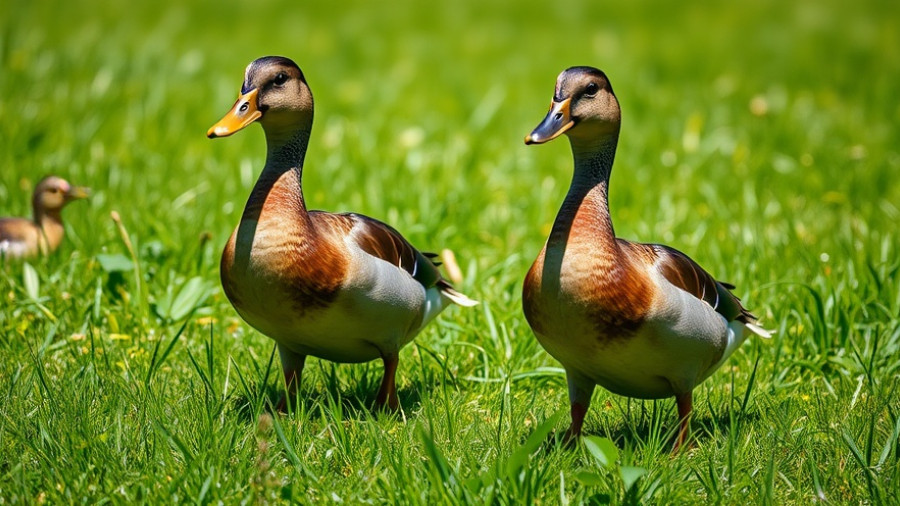
Understanding the Current Bird Flu Situation in Virginia
The Virginia Department of Wildlife Resources (DWR) has recently issued a warning following an uptick in suspected cases of H5N1 bird flu. Reports of deceased black vultures, believed to be linked to this highly pathogenic avian influenza, have raised alarms since the state confirmed 12 suspected cases since July. With notable incidents appearing in regions like Hampton Roads, naturalists and residents alike are advised to report sightings of multiple dead birds—specifically vultures, waterfowl, and other wild birds—and disease symptoms among wildlife.
How to Report Suspected Bird Flu Cases
To help monitor the spread of the virus, the DWR encourages residents to call their Wildlife Conflict Helpline at 1-855-571-9003 or email wildlifehealth@dwr.virginia.gov if they encounter: five or more dead vultures or wild birds, sick or dead raptors such as eagles and hawks, or any dead birds in large numbers. These reports are crucial as they can assist in tracking potential outbreaks and halting the virus's spread among wildlife.
Precautionary Measures for Handling Dead Birds
Handling wild birds can pose serious health risks, especially if those birds are infected. The DWR recommends using rubber gloves, masks, and eye protection if individuals need to dispose of a dead bird. Proper disposal techniques include burying the carcass or sealing it in double bags and placing it in secured trash. Handwashing and disinfecting clothes and equipment afterward are highly advised.
The Dangers of Bird Flu and Safety Precautions
Bird flu primarily spreads through the saliva, mucus, and excretion of infected birds. Even people who do not directly handle birds can be at risk if they come into contact with contaminated surfaces. For those engaged in farming or frequently in contact with domestic birds, the implementation of biosecurity measures is essential. Keeping flocks away from areas frequented by migratory birds and ensuring clean separate clothing for farm visits is pivotal in preventing transmission.
How the Bird Flu Outbreak Fits into National Trends
In the broader context, bird flu outbreaks have been a recurrent issue across the United States. Since February 2022, millions of birds have been affected nationwide due to avian influenza. The Virginia Cooperative Extension emphasizes that practitioners across the poultry sector must remain vigilant through rigorous biosecurity practices. Implementing effective containment strategies is vital not only for wildlife protection but also for safeguarding the poultry industry from economic devastation.
Conclusion: Act Responsibly and Stay Informed
Awareness of bird flu symptoms and how to report cases can play a significant role in the response to this public health concern. Make it a priority to observe bird health in your area and report any suspicious activity. With increased vigilance and proactive measures, we can mitigate risks associated with bird flu for both wildlife and community well-being.
 Add Row
Add Row  Add
Add 




Write A Comment